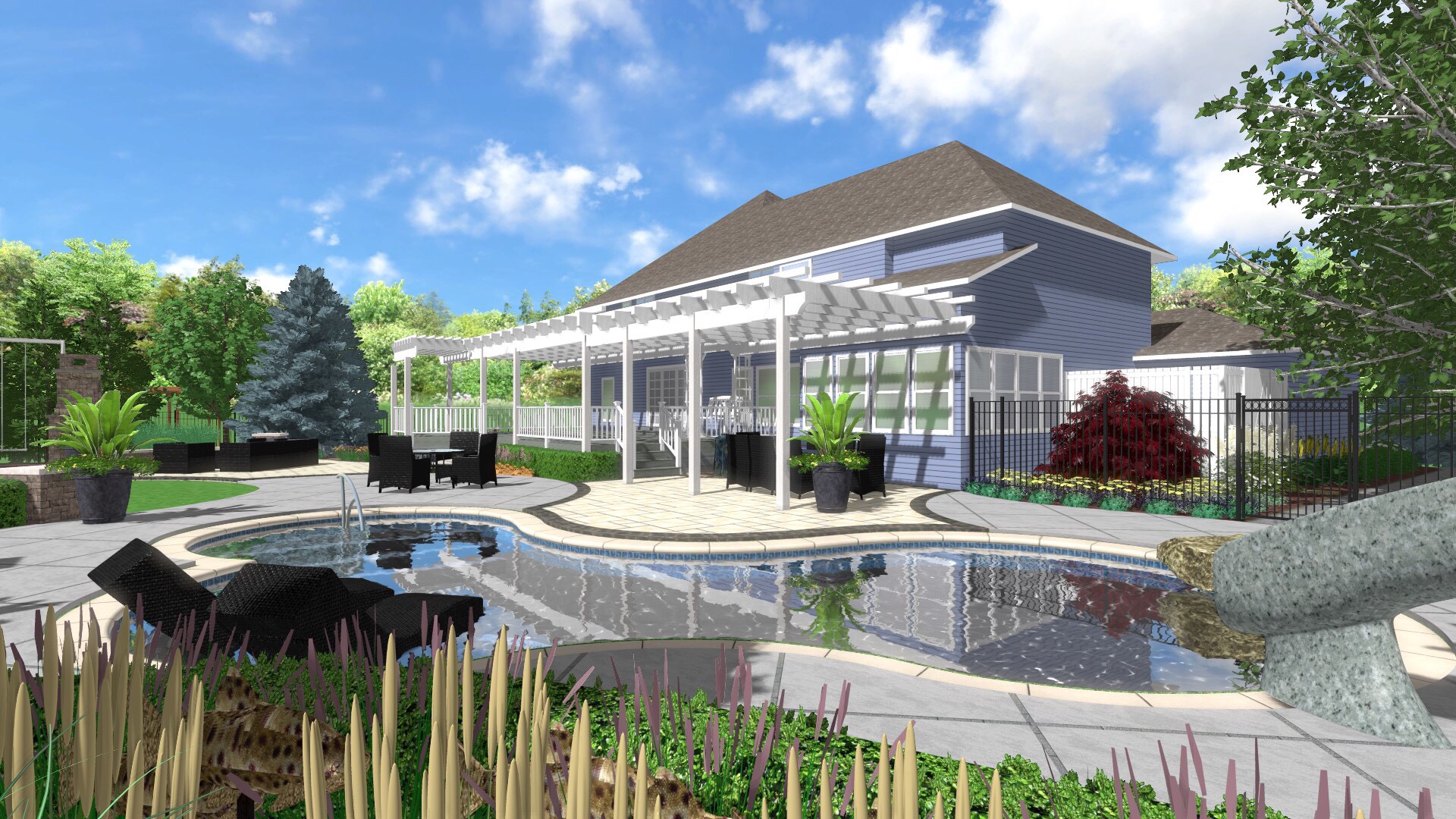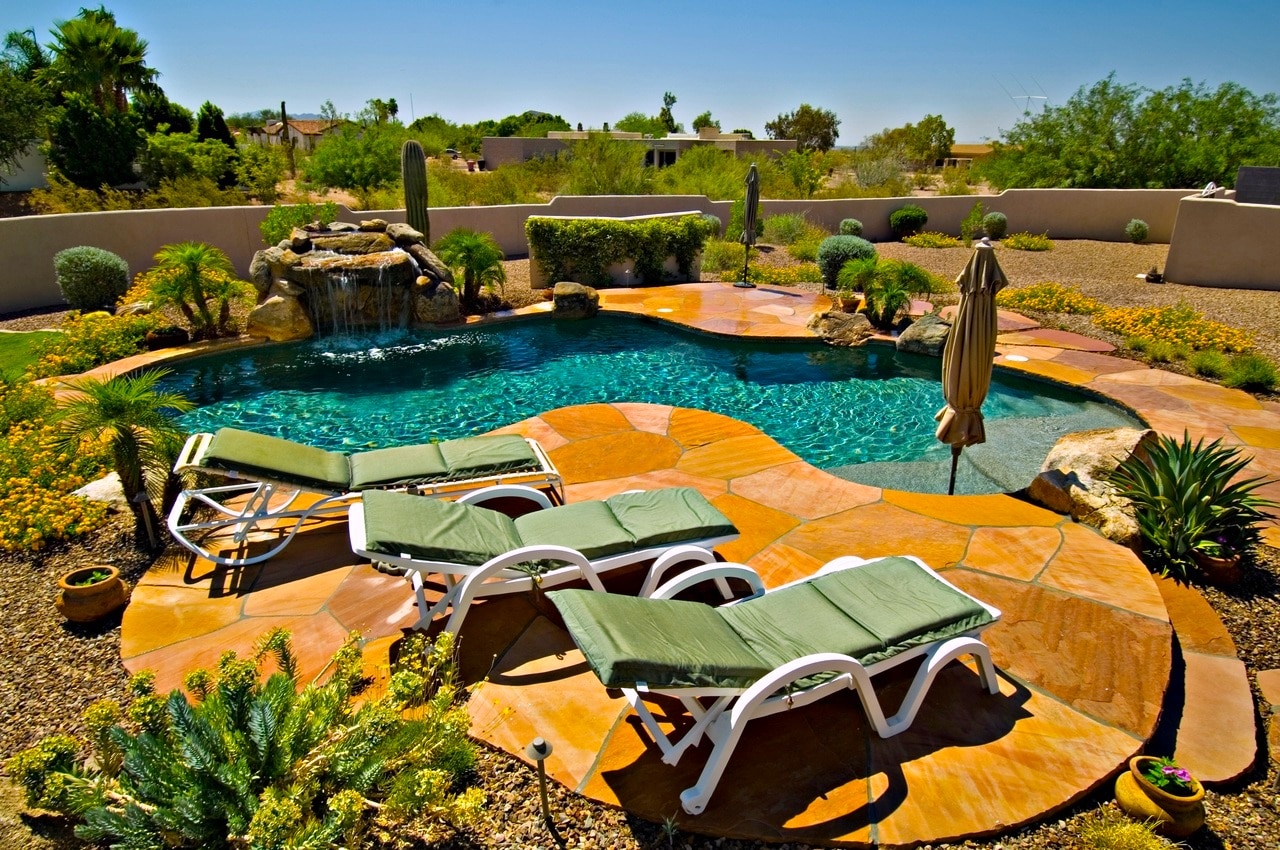
Envision yourself lounging on a comfy chaise under your shaded cabana. You watch your children playing Marco Polo in the crystal blue water of your pool while your spouse grills lunch on your outdoor kitchen.
This fantasy can become a reality with the help of a professional trained in creating these outdoor havens.
Whatever you desire for your outdoor spaces, you first have to find the right landscape designer or landscape architect and landscape contractor to help you get what you need or want on the budget you can afford.
Landscape Designer Vs. Landscape Architect: Which to Hire?
For your landscape projects, you need to find either a landscape architect or a landscape designer to get your outdoor living ideas mapped out. But which to hire?
For answers, we turned to Bruce Williams, landscape designer at Urban Prairie Landesign in Omaha, Neb. He has helped people get their landscaping ideas made into their personal paradises outside their patio doors. He is witnessing new trends for these “staycation” spots such as bubbling boulders, pergolas with motorized louvers controlled by smartphones and outdoor home offices.
The primary difference between landscape architects and landscape designers is one of scope, he says. Designers mostly work on residential landscape and small commercial projects. Most of the time, landscape architects deal with large commercial landscape plans.
“Landscape architects are rarely needed for residential projects,” he adds. However, if earth-moving construction for such things as a pool addition, an architect might be brought in to the project. And some of the bigger landscaping companies hire both designers and architects within their staff.
Check Credentials
Credentials are important for both of these professionals. You can find landscape architects in your area by going to the website of the American Society of Landscape Architects (ASLA) to use their firm finder. For a landscape designer, you can go to the Association of Professional Landscape Designers (APLD).
Williams also suggests looking at company websites along with seeing their projects posted on Houzz, Pinterest and other social media sites.
Read people’s Google reviews, too. You can also ask the company for references of homeowners who have recently used the company for similar projects.
“As a landscape designer, we look at a project as a whole even though we might not do everything,” he explains. “We like to design the project as a whole, so we aren’t planting a tree where you might want a shed someday.
How Much of a Landscape Plan Is Done at Once?
Homeowners do the work in logical phases and split it up and work on it for several years, usually between two and 10 years, he says.
Depending the size of a landscape design company, it can take care of all the pieces of the puzzle, such as performing construction management, hiring subcontractors for the plumbing, electrical work and masonry.
“Designers try to think through everything,” he says. “Plus, we have multiples of each kind of contractors we can call upon to finish the work so projects aren’t held up. If a firepit needs hooked up to the gas line, we have licensed plumbers to hook that up.”
Williams says that 99 percent of the clients he works with do not reveal their budget upfront. So, he goes through their needs and wants, and asks a lot of questions. With the initial conceptual design down, they usually have their estimated budget by the second meeting.
“We very rarely do a big project all at once. A lot of people use their tax returns for landscaping, and they end up doing a little every spring,” he adds.
Landscape Designer’s Duties After Drawing Up Plans
In most cases in his market, if the project proceeds, the designer goes on to become the project manager to some degree, Williams says. “We will order materials, make regular job site visits, maintain client communications and help keep track of project billing. This way the client and crew has one point of contact from start to finish which makes for a successful project.”
Very few companies in the Midwest are design-only. They are part of a larger organization that can do the install as well as the maintenance of the project for years in the future, he adds.
Landscaping Design Costs
Many times, just a verbal consultation with a landscape designer or architect can cost $100 to $150. To get a comprehensive plan that includes landscape lighting, architectural features, irrigation, plants and more can run from $300 to $2,500, according to Houselogic by Realtors.
As with most services, different companies do things different ways, and of course, everything depends on the scope of the project, states Williams.
In the Omaha market, as a general rule, landscape design services are charged by the project. The designer will meet with the client, determine the project scope and give an estimate for design services. One revision is usually included in the initial price and other revisions are charged by an hourly rate. The cost of the design is usually credited back to the project on the final billing.
The deposit ranges from 30% to 50%, with progress billings added on large scale projects, he explains.
Landscaping Costs and the ‘Recoup Value’
Professionals say that many homeowners invest between 10 to 20 percent of their home’s value for the landscaping, according to the ASLA. That might seem quite high, especially if you have a $500,000 home. But when it comes time to sell, your improved curb appeal returns to you 100 to 200 percent of their costs.
Homes which have been professionally landscaped sell for 15 to 20 percent more at the time of resale than other houses with less eye-catching landscapes from the local garden center, the association says.
During the design process, Williams hears all kinds of dreams. Some want a beautiful garden design. Others want amazing hardscape with a slate patio with an outdoor living space for dining, a fire pit and outdoor kitchen. Hardscaping includes inanimate objects such as a pergola, retaining wall or benches. The national average cost for a pergola is $3,100, says FixR, a home construction price guide site. FixR also estimates that a 12 foot by 16 foot concrete patio will run about $2,000.
Choosing What You Want in the Landscape Plan
“Most of my clients are looking for relaxation. It’s a place to come home and be away from everything else,” he says.
However, he’s also getting requests for people wanting design ideas for a place in that backyard oasis for an outside home office. They want a landscaper to help them bring their laptop outdoors, be comfortable and enjoy the natural surroundings.
But he suggests people figure out their lifestyle and what they want the space to become — for themselves, their family and friends. Look through magazines and websites for ideas.
You might need a retaining wall to keep your backyard from sloping down the hill. But that wall can become part of your entertaining space. Would a waterfall next to the outdoor dining be something you’ve dreamed of? Maybe a new irrigation system? Or maybe you want an all-inclusive outdoor kitchen. Williams has designed all decked out kitchens and outdoor living spaces.
“They have more accessories for outdoor kitchens than your indoor kitchen. It can be anything from a simple grill island to smokers, pizza ovens, wine coolers, granite countertops, and outdoor refrigerators,” he says.
Fire pits and outdoor fireplaces have become a big want for homeowners. It’s about making memories and having entertainment spots, Williams adds.
Technology Helps Clients Visualize Landscaping Design

For the past five years, Williams says he has been using 3D software to help his clients see the new landscape plan much easier.
“Most people are visual. I can even make a movie with the 3D design and move through the whole landscape design,” he says. “I can change the color of the pavers and put fire features with the fire going. It’s very realistic. So they understand what it actually will look like.”
The renderings rise far above the 2D drawings he used to do when he started as a landscape designer 27 years ago. Then, the preferred tools were markers and colored pencils. The blue pencil colored in the water features to make it more real.
If your budget doesn’t match your dreams, then pick the landscape architecture you can afford first so you at least have a patio or deck.
“Some people just get overwhelmed because landscaping means different things to different people,” Williams says. “But we are here to help them decide what they can do, what they need. We can go through the list of what we can do for them depending on what they are interested in.”
Find a local landscape contractor who can help you design and create your dream landscape and backyard oasis.




